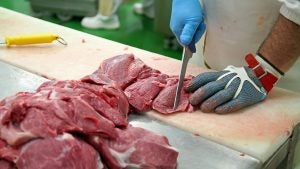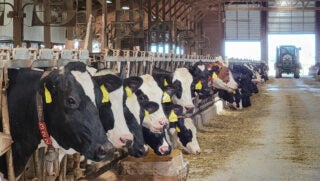Today, the U.S. Department of Agriculture announced that Agricultural Research Service scientists have documented the absence of Trichinella infection in the commercial pork supply.
This parasite once posed a significant food safety risk, but a comprehensive national survey conducted in collaboration with the Animal and Plant Health Inspection Service found zero infections among 3.2 million pigs raised under the U.S. Pork Quality Assurance Plus (PQA+) program. These findings align with international food safety guidelines, establishing that Trichinella in U.S. commercial pork is now considered a negligible risk to public health.
The U.S. does not perform post-slaughter testing for Trichinella in pork due to the effectiveness of modern production systems that minimize the risk of exposure to this parasite. However, the absence of Trichinella infection had never been verified through national testing until this study. ARS researchers undertook this project to confirm whether the PQA+ program effectively eliminates the risk of Trichinella exposure in commercial pork, addressing both domestic safety and the demands of the U.S. export market.
The PQA+ program, developed by the U.S. pork industry, is an education and certification initiative designed to help pig farmers and their employees improve production practices continually. It encompasses food safety, animal well-being, environmental stewardship, worker safety, and public health. The program includes five best management practices to prevent Trichinella exposure:
- Following proper feed biosecurity protocols.’
- Preventing exposure to rodents, wildlife, and birds.
- Refraining from feeding raw food waste of animal origin to swine.
- Promptly removing and properly disposing of swine carcasses.
- Documenting animal arrivals and departures from PQA+ production sites.
- Comprehensive Testing and Results
The ARS study tested a total of 3,208,643 animals across twelve processing locations over 54 months. No parasites were detected in any of the diagnostic samples, providing 95 percent confidence in a Trichinella prevalence of less than 1 in 1,000,000 pigs. This extensive testing supports the conclusion that pork from pigs managed under the PQA+ program poses no public health risk.
Dr. Benjamin Rosenthal, Research Leader of the ARS Animal Parasitic Disease Laboratory, emphasized the significance of these findings: “The surveillance data support the assertion that the U.S. PQA+ program effectively mitigates risk for Trichinella infection in pigs. It is equally important to note that the data could be useful for future food safety decisions, including hazard analysis decisions.”

Historical context
The recognition of trichinosis symptoms dates back to ancient times, though the specific cause was not understood. Historical records suggest that early societies, including the Romans, may have had some awareness of the dangers of consuming undercooked pork, as various religious and cultural dietary laws discouraged or prohibited eating pork.
Scientific understanding of trichinosis began to develop in the 19th century. In 1835, the first definitive observation of the Trichinella parasite was made by James Paget and Richard Owen in London. They discovered the larvae in a human muscle biopsy, laying the groundwork for future research.
The link between trichinosis and pork consumption was firmly established by the mid-1800s. Friedrich Küchenmeister, a German physician, conducted experiments that demonstrated the lifecycle of Trichinella spiralis. He fed infected pork to animals and observed the development of larvae in their muscles, proving the transmission route.
By the late 19th and early 20th centuries, trichinosis had become a recognized public health issue, particularly in Europe and North America. Outbreaks were common, often traced back to the consumption of raw or undercooked pork products such as sausages. Public health measures began to focus on improving pork handling and cooking practices to reduce the risk of infection.
Modern eradication efforts
Significant progress in controlling trichinosis was made in the 20th century. Advances in veterinary science led to better management and inspection of swine herds, reducing the prevalence of Trichinella in domestic pigs. Public health campaigns emphasized the importance of thoroughly cooking pork, further decreasing the incidence of human infections.


